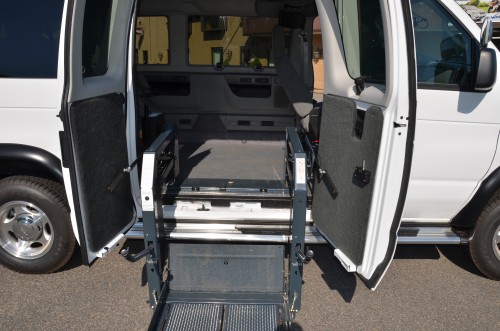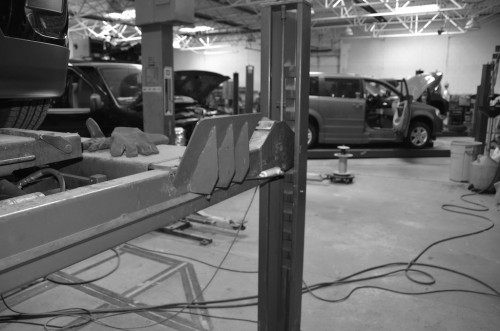Wheelchair lifts are advanced mobility systems that have changed the way the disabled move, work and live, being a blessing for users and caregivers equally. They are used for wheelchair accessible vans and other mobility vehicles, known also by the name platform lift, making the travel of wheelchair user much easier and more pleasant. Wheelchair lifts have multiple purposes and can help people with disabilities in many ways, even being adapted according to individual needs in as many ways you need.
Usage of wheelchair lift can facilitate everyday functioning, eliminating the need to lift the wheelchair and place it into the vehicle with just pulling up to the platform of the lift and be lifted up or down. It is extremely convenient, giving confidence to wheelchair users to go to the places they want to. Wheelchair lifts made a significant and positive change compared to the previous experiences when they didn’t exist.
They can be automatic and semi-automatic, electric and hydraulic. Automatic one takes care of the folding, unfolding, lowering and raising, while semi-automatic one needs manual operating. Electric wheelchair lifts are easier to maintain than hydraulic ones. They are flexible and easy to install and come with battery back-up. The full benefit of electric wheelchair lift can be felt together with stair and automobile lifts and van ramps. Hydraulic ones don’t need electricity and can function in the case of power failure. However, they require constant maintenance and care.
Wheelchair lifts that are usually used for vans and minivans are called rotary or “swing” lifts because their method of operation involves moving the wheelchair by swinging it up-and-down or inside and outside. There is a great choice of wheelchair lifts, so you should consider all the options, with the respect for your needs and wants, including the decision about whether you want to travel in the wheelchair or in the vehicle seat, which will also mean the difference between installing it inside or outside the van. Both options have advantages and disadvantages.
An outside wheelchair lift is intended for your personal mobile device to be installed outside of the car or wheelchair vans. It will be carried behind, but the way that the driver will have complete road visibility. If you choose an outside lift, it will require very small modifications of the vehicle. The lift is usually attached to a trailer hitch on the rear.
The type of the wheelchair lifts has to be compatible with your van. There are some special features that can make a difference in your everyday functioning, for example having a back-up lifting or lowering mechanism if the main drive system fails. When you sort out your needs, it’s easier to make a decision about the choice of the corresponding advanced mobility system.
Lifts
In this section we explain the various types of lifts available on the market. There are advantages and disadvantages to all of these lifts. It is highly recommended that you get to know the lifts available, the product lines, your nearest dealers and their qualifications. If you purchase a lift only to find that there is no one within a reasonable distance to provide service and repairs you will soon regret that purchase. Always consult experts at VMi New England Mobility Center BEFORE you buy.
There are basically two types of wheelchair lifts:
- Platform Lift
- Rotary (or Swing) Lift
In addition, these two lifts come in various types. Hydraulic, electrical mechanical, gravity and those that combine hydraulic and electrical.
The hydraulic lift uses a pump and a cylinder filled with fluid pressure, which enables the pump to raise and lower the lift along with the power from the van’s battery.
The electricall mechanical lift operates either by chain or screw rod, with power provided solely by the battery.
The gravity lift has power to lift and fold, while gravity lowers the lift platform to ground level.
All of these lifts depend, at least in part, on the battery. If your battery is weak or dead, the lifts will not work.
If you are a scooter user, measure your scooter’s length. Some scooters are longer than the standard platform on lifts. An extended platform is available to accommodate these longer scooters. Be aware, though, that this could require a raised roof, too.
Platform Lift
This lift is stored either in the side, the rear, or under the floor of a van. The lift requires two doors or a sliding door on the side of a van. The platforms have expanded metal in the upper half of the platform for better visibility when the lift is folded and the van is being driven.
Lifts stored under the van require modifications to the exhaust system, gas tank, etc., depending on the make of the van. Only the pump and motor are located inside vans using under-the-floor lifts.
Platforms may also be different, depending on the lift. There are both solid and fold-in-half platforms. The fold-in-half platform folds to give better accessibility to the doors. Some fold-in-half platform lifts are mounted on a single post.
Be aware of the differences between automatic and semi-automatic lifts. A fully automatic lift will fold, unfold, lower and raise by operating a switch located inside (on the side of the lift) or outside (on the side of the van), and, in most cases, on the dash. A semi-automatic lift requires manual folding and unfolding of the platform. Using a hand-held pendant switch, the platform can be mechanically lowered and raised. You MUST have assistance with this type of lift, as it is designed for passengers who will not be riding alone.
Rotary Lift (or “Swing Lift”)
The platform of this type of lift never folds. Instead it “swings” inside, outside and up-and-down. The rotary lift swings into the van and the lift platform sits on the floor in the middle of the van.
Some individuals like the rotary lift because of the parking convenience. Less room is needed to enter or exit the van. Also, this lift is mounted on one post inside the van. The post controls the swinging action of the lift. One of the drawbacks to the rotary lift, though, is the cross-over bar. On some rotary lifts this bar connects the platform to the swing bar, limiting space for loading and unloading on the platform.
Switches serve very necessary functions in this lift. In most cases there are three switches on the dash. They operate the lift as well as provide an open and close function for the power door openers. The motors fit into or beside the doors and are manufactured to fit only one brand of lift.
Back-up System
You may also want to purchase a back-up system for your lift. Many government agencies require a lift to have a back-up system for use in emergencies. With a back-up system the lift can be manually manuvered and users can exit the van with assistance from an outsider. Most back-up systems are herd to operate alone, so expect to need someone’s help.
Safety Flaps
All lifts have an extension or “curb” at the edge of the platform which is approximately three-to-four inches high. This safety flap is designed specifically to prevent the wheelchair or scooter from rolling past the edge of the platform.
Finally, when purchasing a lift, be sure to check on the use of raised doors. If needed, your lift will have to be ordered for the extended doors. Determine if this is necessary before completing your vehicle equipment decisions. It will help you avoid very costly errors.
Again, be sure to consult the experts at VMi New England Mobility Center BEFORE you buy a wheelchair van or wheelchair vehicle lift to prevent costly and frustrating mistakes.
–



